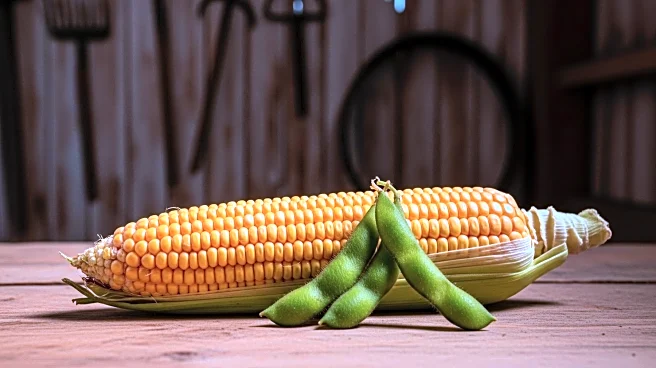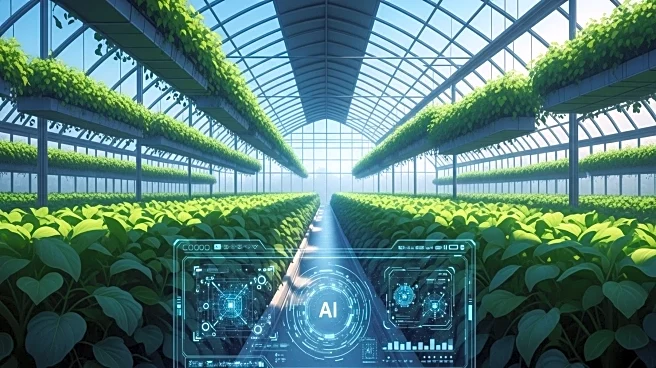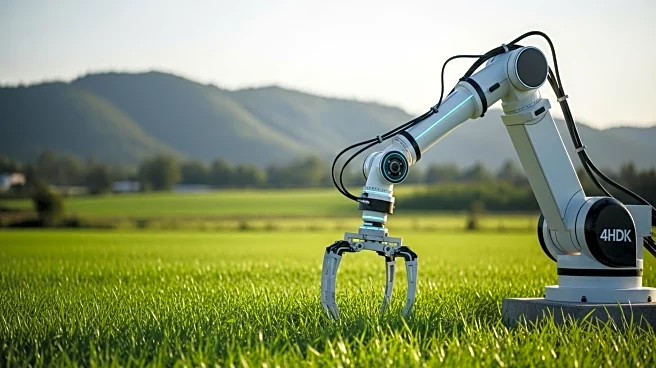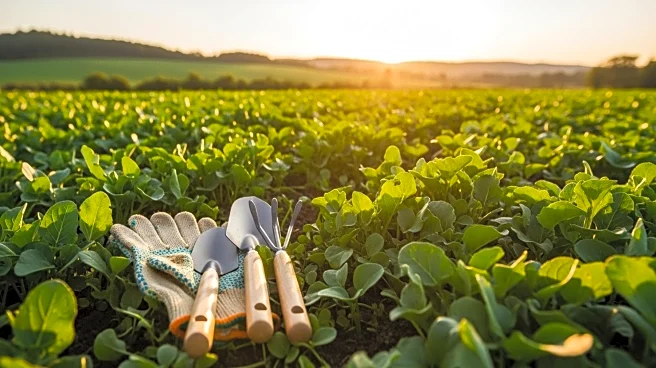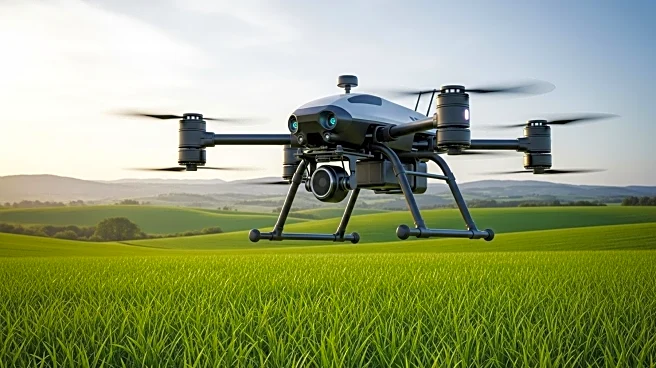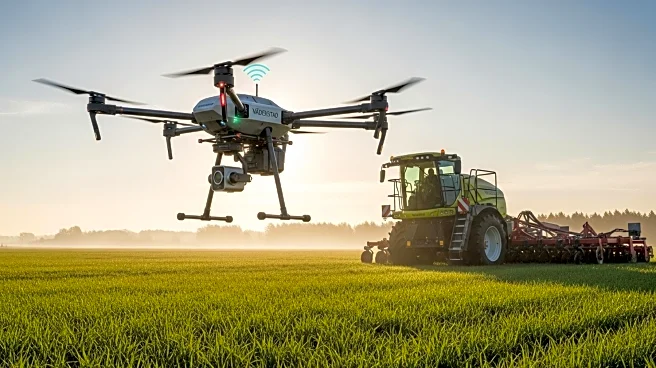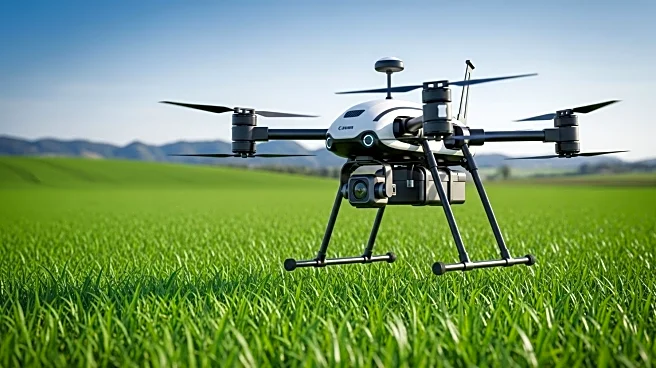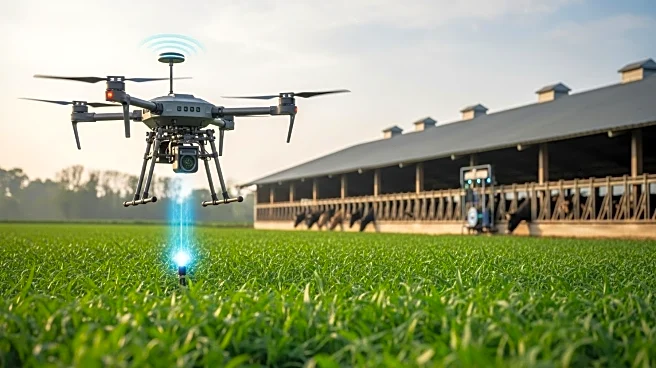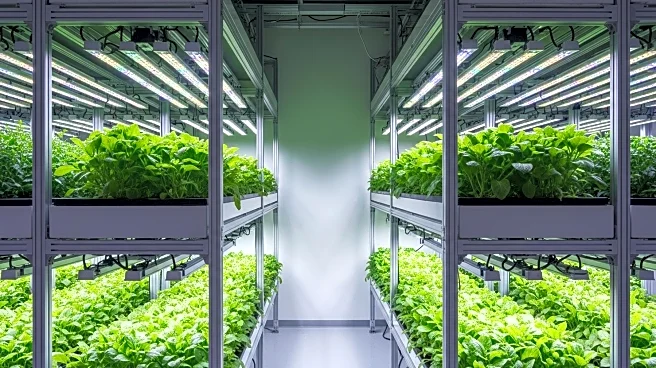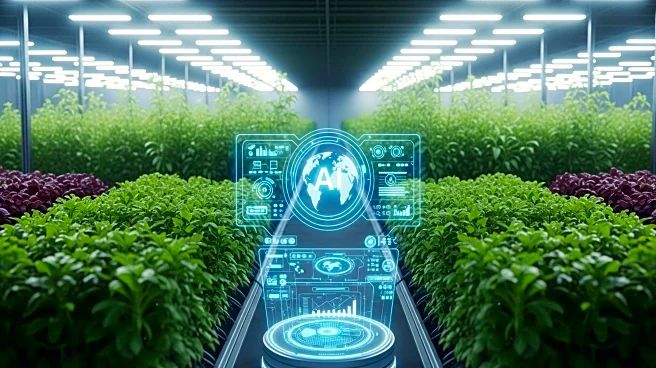What is the story about?
What's Happening?
Farmers in eastern Nebraska, like Quentin Connealy, are facing unexpected yield discrepancies in their corn and soybean fields. Despite well-managed fields, issues such as uneven emergence, nutrient loss, disease, and weather stress have led to disappointing yields. Key factors affecting corn yield include ears per acre, kernels per ear, and kernel weight, with environmental factors playing a significant role. For soybeans, stand uniformity and soil conditions are critical, with issues like soybean cyst nematode impacting yields. Farmers are using tools like drone imagery and moisture probes to better understand and manage these challenges.
Why It's Important?
The ability to diagnose and address yield discrepancies is crucial for farmers to maintain profitability and sustainability. Understanding the factors that affect crop yields can help farmers make informed decisions about planting, fertilization, and pest management. This knowledge is vital for optimizing resource use and minimizing environmental impact. The use of technology, such as drones and moisture probes, represents a shift towards precision agriculture, which can lead to more efficient farming practices and better crop management. This has broader implications for food security and the agricultural economy.
What's Next?
Farmers are likely to continue integrating advanced technologies to monitor and manage their fields more effectively. Postharvest evaluations and adjustments in management strategies, such as variable-rate seeding and fertility, will be essential. Collaboration with agronomists and other experts will help farmers refine their approaches and improve yields in future seasons. As environmental conditions continue to change, ongoing adaptation and innovation in farming practices will be necessary to address new challenges and opportunities.
Beyond the Headlines
The move towards precision agriculture highlights the increasing importance of data-driven decision-making in farming. This shift not only improves efficiency but also supports sustainable practices by reducing waste and optimizing input use. The focus on technology and collaboration underscores the evolving nature of agriculture, where traditional practices are being enhanced by modern innovations. This evolution is critical for meeting the demands of a growing population and addressing the challenges posed by climate change.
AI Generated Content
Do you find this article useful?
